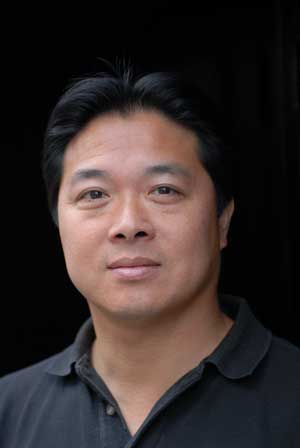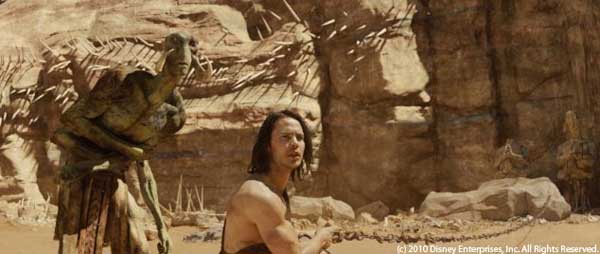 Walt Disney Pictures’ upcoming release ‘John Carter’ directed by Andrew Stanton (Finding Nemo, Wall-E fame) is a sci fi flick following the story of a Civil War vet John Carter who gets transplanted to Mars, finds himself in midst of 12-foot tall barbarians, and ends up becoming a part of conflict between the various nations of the planet.
Walt Disney Pictures’ upcoming release ‘John Carter’ directed by Andrew Stanton (Finding Nemo, Wall-E fame) is a sci fi flick following the story of a Civil War vet John Carter who gets transplanted to Mars, finds himself in midst of 12-foot tall barbarians, and ends up becoming a part of conflict between the various nations of the planet.
As the story suggests the movie called for massive environment creation, creature development and VFX. Double Negative (Dneg), with facilities in London and Singapore, was the lead studio on the show. VFX Supervisor Peter Chiang provides an overview of the work Dneg did for John Carter.
John Carter is Andrew Stanton’s first Live- Action Film as the Director. How was it working with him?
There was a great collaboration in all aspects of John Carter right through from pre-production, principle photography and post production. Andrew’s skill in storytelling and animation was an added bonus. There are a lot of cross-overs in creating a shot for feature animation and visual effects in film. We introduced Andrew to new tools that took the shots into a photo real world. His terrific sense of timing meant that we could be very specific on details within shots, working only on the things that were important to him. He was use to “signing off” the important milestones needed to create a shot or sequence. On set we would spend large amounts of time with the other heads of department working out methodology which meant that what was being captured was very accurate.
What was the scope of work on this film?
Double Negative dealt with all the creatures principally the “Tharks” that stood between eight and a half feet and seven and a half feet tall. We always wanted to shoot as much as possible in a live action set with our principle actors. To aid their eyeline and to represent a performance on set, actors played the four principle Tharks. Willem Defoe played Tars Tarkus, Samantha Morton played Sola, Thomas Haden Church played Tal Hajus and Polly Walker played Sarkoja. It was important for us to gather as much information as we could from the live action shoot so we did facial capture. There were approximately 1850 shots in the film. Double Negative handled 960, Cinesite approximately 800 and MPC around 80 with Nvisage handling a few. At Double Negative around 800 artists worked on the film.
What were Andrew’s initial thoughts on the world of Mars, how did Dneg further develop it?
We talked a lot about whether the environment should mirror the red photos from the Mars Voyager. In the end Andrew graded out some of the blue in the sky and removed any cumulus clouds. We did a lot of set extensions making full use of the actual geology in Utah. Andrew always looked to adding the minimal extension, just enough to flip the landscape into another world.
The trailer shows many extra terrestrial creatures, so what was the scope of the creature development in the film?
Double Negative reviewed and updated its entire creature pipeline for the film. John Carter is the largest creature show to be awarded and the complex work demanded new tools. Facial, rigging, muscle system, animation, crowd, creature fx, and cloth were a few of the areas updated.

Could you tell us about some challenges faced by the team while integrating the CG Character with live action?
The shooting methodology for gathering information was key to the success of the shots. We would always try to use the clean plate shot with Taylor Kitsch and Lynn Collins. The facial of the actors playing the Tharks helped to kick start the animation process. Getting the eye line at the correct height and the right reactions from our lead actors helped to sell the presence of another character. Sometimes Andrew preferred the take with the Thark actors in the shot and we would then need to rebuild the background plate. The lighting of the CG characters was more complex, additional lights were constantly added to highlight the Tharks more clearly. Objects that needed to be handed to and from Tharks all required take overs or careful choreography on set.
